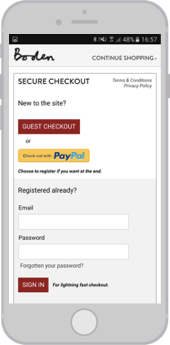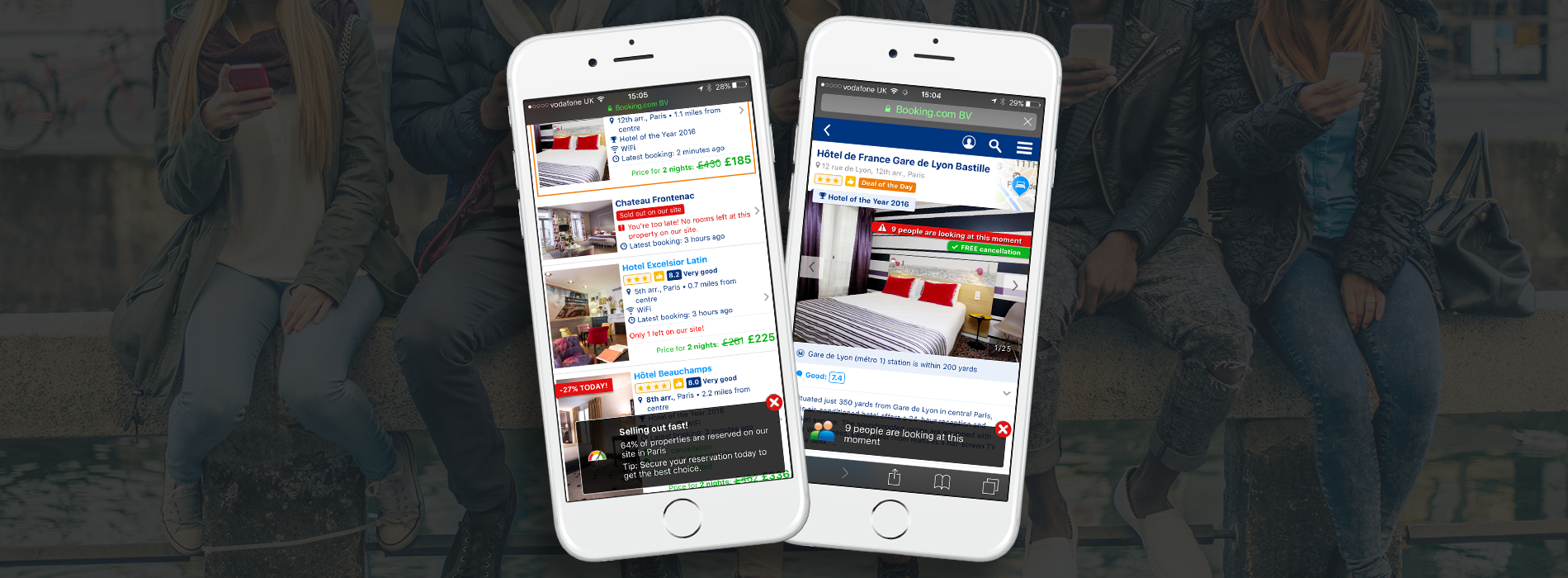Marketing Manager Jack Ford and Product Manager Alec Berry looked at the issue of mobile optimization in our latest webinar, with some great stats and tips on increasing mobile sales.
Mobile traffic is now outstripping desktop in most retail sectors, but sales are not keeping pace. People are still three times more likely to buy on desktop rather than mobile.
This chart illustrates the issue. Almost 49% of all traffic is mobile, but mobile accounts for just 36.8% of sales. Indeed, it’s only the fashion sector in which mobile sales more or less keep pace with traffic.


For many other sectors, mobile is still way behind in terms of sales volume. We contrasted fashion with travel here to show the variation between different industries.
Why do shoppers prefer to buy on desktop?
From the mobile traffic figures, we can assume that many customers are happy enough to browse on mobile, but the sales stats suggest that they prefer to checkout on desktop.
Possible reasons include:
- Easier navigation on desktop. A bigger screen size means tasks can often be completed more easily.
- Bigger images. It’s easier to make a decision about a purchase when you can see larger images.
- Complexity of purchases. Purchases which require more work – holidays, insurance etc – are often tricky on a smaller mobile screen.
- Checkout. Perhaps the biggest reason. Data entry is harder on mobile so longer checkouts requiring address and payment details can be a turn off for shoppers.
- Shoppers’ willingness to buy on mobile. Just like in the early days of ecommerce, shoppers often had concerns about payment security. These are likely to reduce over time.
The common theme here is user experience. Mobile sites have to work in a way that shoppers understand and to enable them to complete tasks and make a purchase without any unnecessary hurdles.
Some retailers are doing better than others on mobile though, and this is generally down to a greater focus on the mobile user experience.
Data and Insight
As Dave Chaffey from Smart Insights told us, a mobile optimization strategy should start with a look at how mobile shoppers use your site and learn those lessons.
Mobile conversion rates are lower than desktop because people are opting out at some point in the process.
As Alec Berry explained, analytics can help you to identify areas to improve:
“You need to understand where they are leaving your site and what the reasons are. You can specifically isolate smartphone visitors in analytics, building segments according to visitor device type, to understand where in the funnel they make it to, looking at specific pages to understand where they drop out. This helps you to identify where the problems are so you can fix them.”
Insights from analytics are crucial here, but other sources and tools are important. For example, customer feedback from surveys can provide context to analytics data, and user testing can show you how people use your site in the real world.
Improving Mobile Checkout
The bottom line here is that entering address and payment details is a pain. It’s a pain on desktop, and can be even worse on mobile where factors like fat fingers and small form fields exacerbate the problem.
Econsutancy’s Ben Davis gave us some tips for improving mobile checkout, including…
Use guest checkout
Why put barriers up between the customer and the sale?
Guest checkout options remove the need to register and let customers head straight into the checkout process. You can always ask them to register post-purchase anyway.
[one_half]



Make Payments Easy
Anything which makes payment easier or helps customers to cut corners during checkout will have a positive impact on conversions.
If you’re Amazon, and have hundreds of millions of customer accounts with saved payment details then all you have to do is ask them to sign in. It’s less easy for other retailers, though saved details can be a great retention tactic.
To encourage first-time customers though, so called alternative payment methods like PayPal are one answer.


Marketing for Mobile
Mobile-specific messaging can help to persuade customers to make a purchase, or to tempt customers back to complete a purchase.
This can take the form on messaging on-site, such as the persuasion techniques used by booking.com, making users aware of the popularity of certain hotels and destinations with messaging designed for mobile.
[one_half]



SMS and push notifications are another way to reconnect with mobile users through messages designed for the format.
They’re more likely to be seen by mobile users too. SMS messages have an open rate of 98% with 90% of messages opened within three minutes.
[one_half]



It’s about using mobile-specific formats to target mobile users.
Key Takeaways
- Use data to gain insights. Identify the areas where mobile customers drop out, and find out why.
- Improve mobile checkout usability. A smooth checkout represents the best area for improving mobile conversions.
- Use mobile-specific channels to keep mobile shoppers engaged.
Speak to an expert
Learn how to convert your online audience into revenue with our experts.
Graham Charlton
Graham Charlton is Editor in Chief at SaleCycle. He's been covering ecommerce and digital marketing for more than a decade, having previously written reports and articles for Econsultancy. ClickZ, Search Engine Watch and more.








![Valentine’s Day Ecommerce Tips and Trends [2024 Strategy]](https://www.salecycle.com/wp-content/uploads/2019/01/valentines-ecommerce-1.png)




![How SaleCycle helped Vodafone increase their online sales by an additional 2,000 additional sales per month [Extended Version]](https://www.salecycle.com/wp-content/uploads/2023/08/vodafone-banner.webp)




